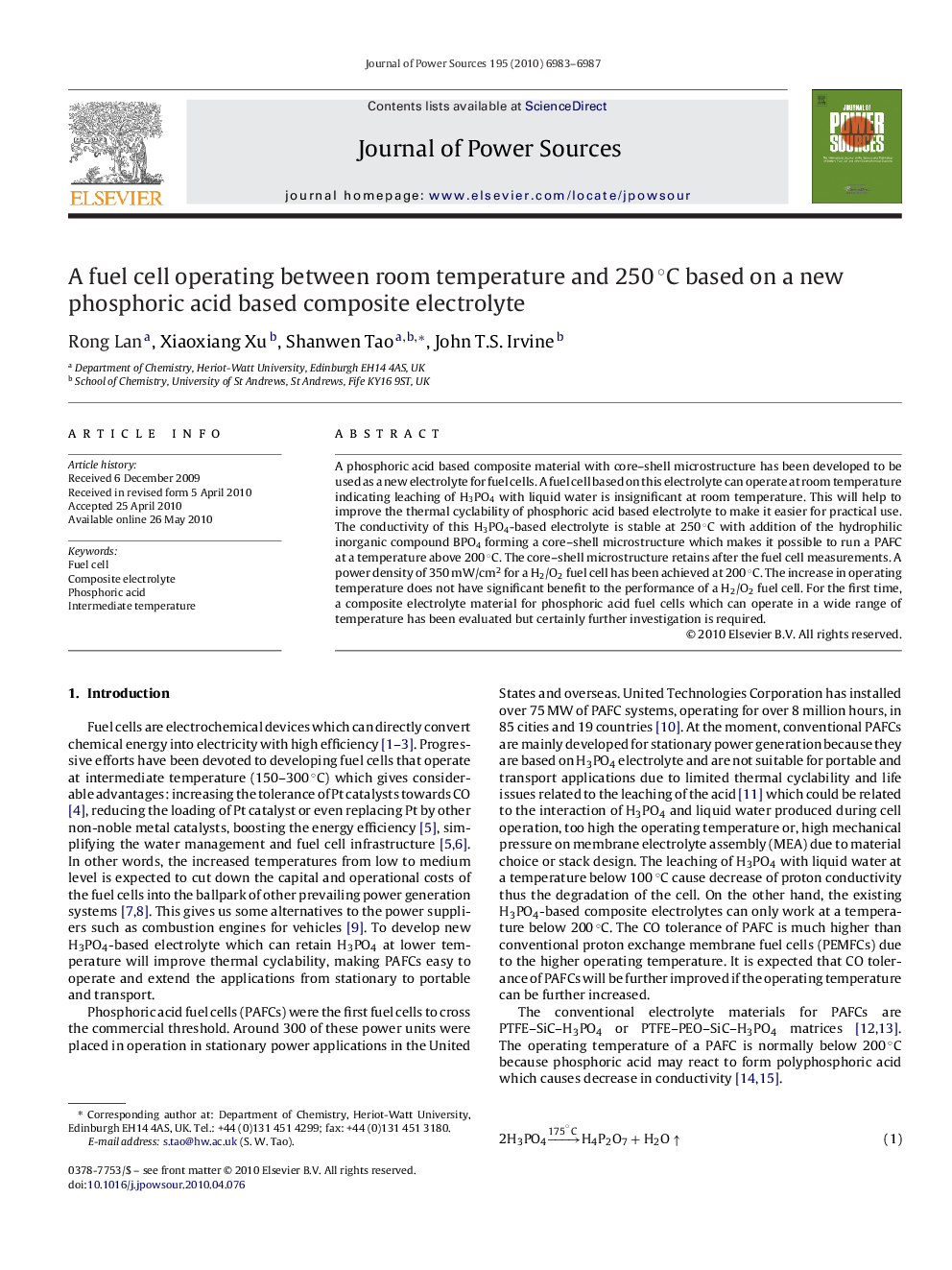| Article ID | Journal | Published Year | Pages | File Type |
|---|---|---|---|---|
| 1289205 | Journal of Power Sources | 2010 | 5 Pages |
A phosphoric acid based composite material with core–shell microstructure has been developed to be used as a new electrolyte for fuel cells. A fuel cell based on this electrolyte can operate at room temperature indicating leaching of H3PO4 with liquid water is insignificant at room temperature. This will help to improve the thermal cyclability of phosphoric acid based electrolyte to make it easier for practical use. The conductivity of this H3PO4-based electrolyte is stable at 250 °C with addition of the hydrophilic inorganic compound BPO4 forming a core–shell microstructure which makes it possible to run a PAFC at a temperature above 200 °C. The core–shell microstructure retains after the fuel cell measurements. A power density of 350 mW/cm2 for a H2/O2 fuel cell has been achieved at 200 °C. The increase in operating temperature does not have significant benefit to the performance of a H2/O2 fuel cell. For the first time, a composite electrolyte material for phosphoric acid fuel cells which can operate in a wide range of temperature has been evaluated but certainly further investigation is required.
